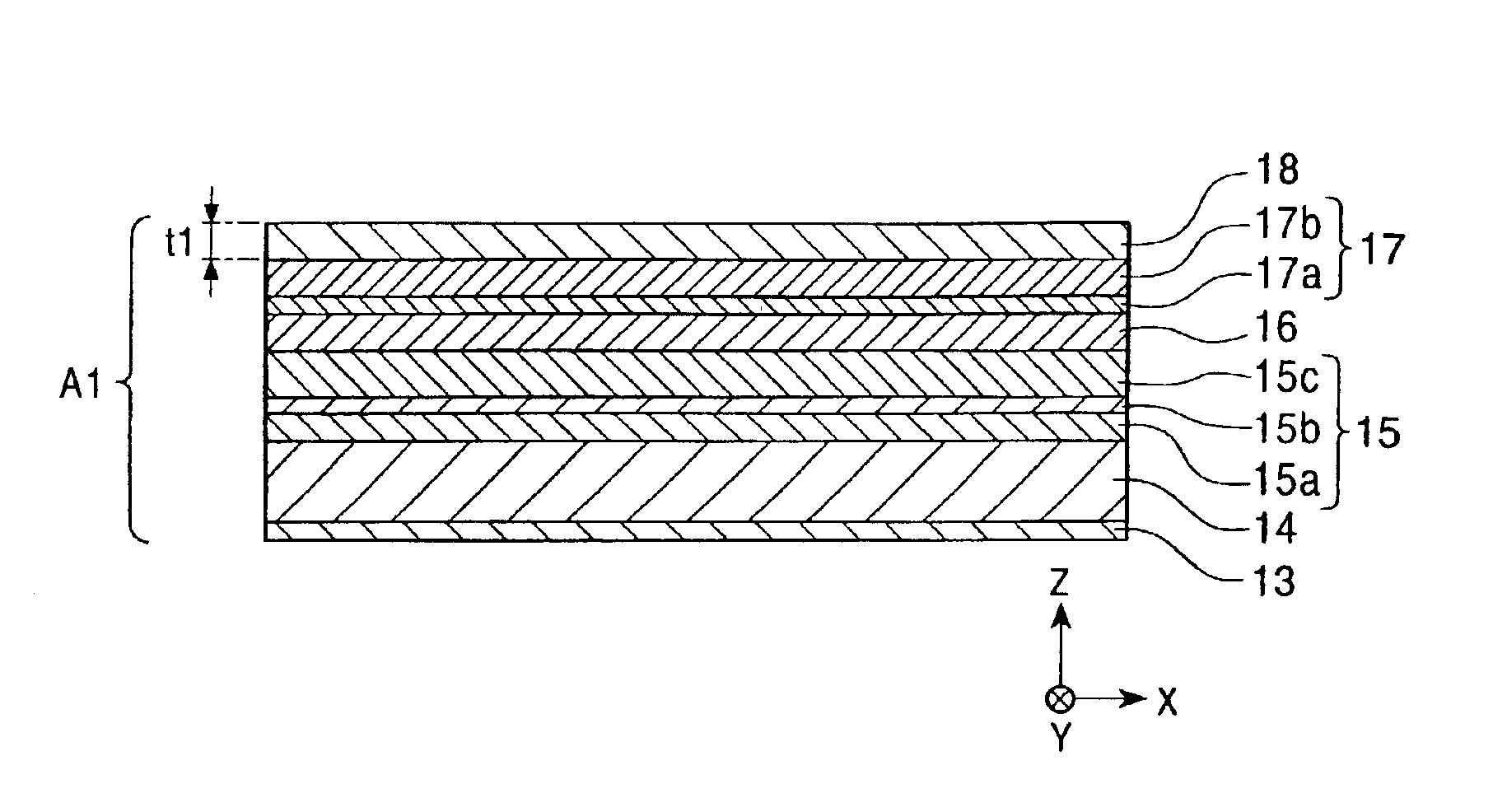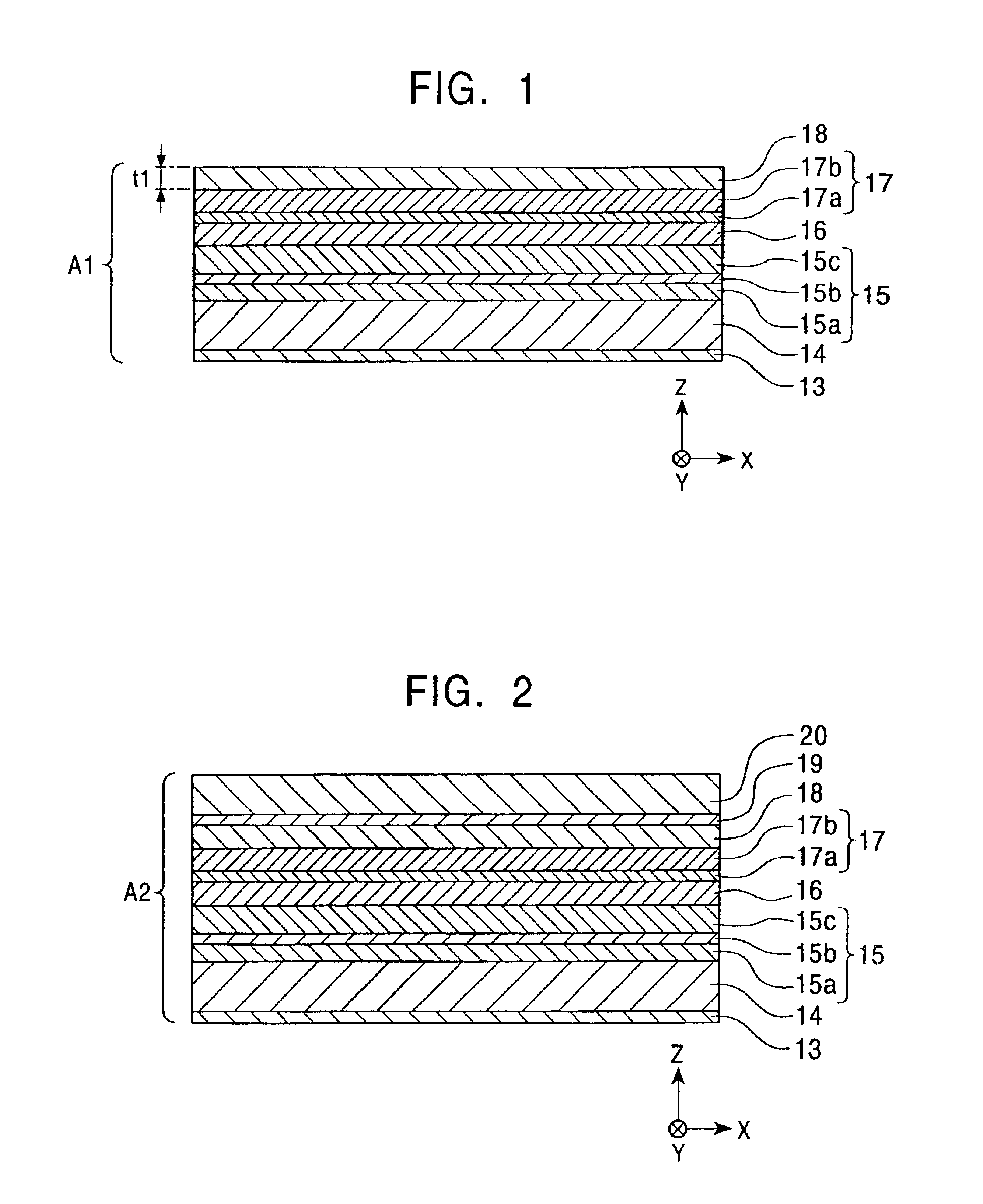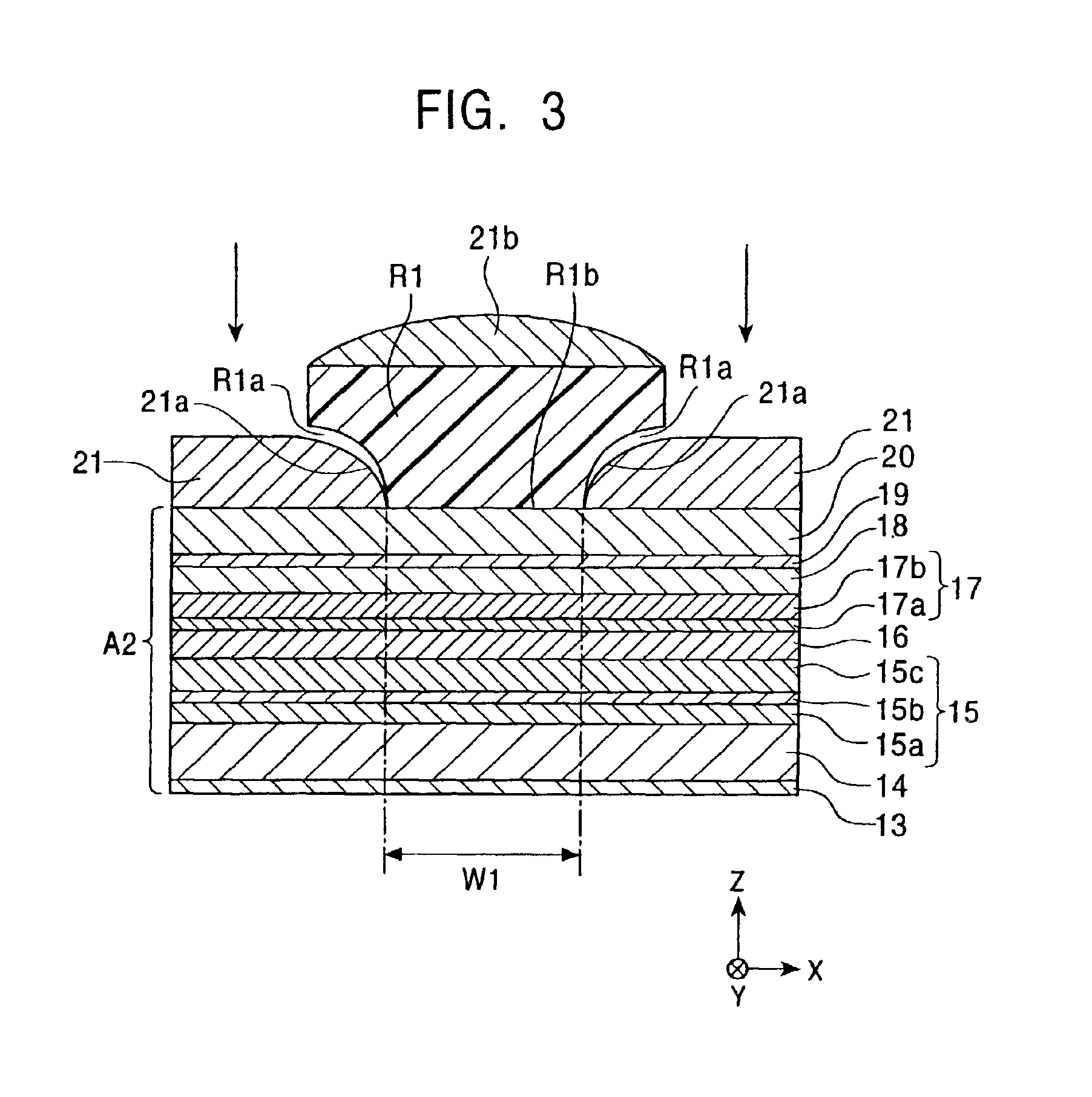Method for manufacturing magnetic sensing element having improved magnetic field sensitivity
- Summary
- Abstract
- Description
- Claims
- Application Information
AI Technical Summary
Benefits of technology
Problems solved by technology
Method used
Image
Examples
first embodiment
[0203]FIGS. 1-5 are diagrams that illustrate a method for manufacturing a magnetic sensing element according to a first embodiment of the present invention. FIGS. 1-5 are cross-sectional views of the magnetic sensing element in the course of manufacture, as viewed from the opposing face of the element.
[0204]If the magnetic sensing element is to be incorporated into a floating head, a lower shield layer is formed on a trailing end face of a ceramic slider with an insulating film, such as an Al2O3 film, therebetween.
[0205]In the step shown in FIG. 1, a first antiferromagnetic layer 14 is deposited on a base layer 13. A pinned magnetic layer 15 of a synthetic ferrimagnetic pinned type is then deposited on the first antiferromagnetic layer 14. The pinned magnetic layer 15 is constituted from a first pinned magnetic sublayer 15a, a nonmagnetic intermediate sublayer 15b, and a second pinned magnetic sublayer 15c. A nonmagnetic material layer 16, a free magnetic layer 17, and a nonmagnetic...
second embodiment
[0284]After the step shown in FIG. 4, the second antiferromagnetic layer 20 is milled partway using the electrode layers 21 as a mask to make a magnetic sensing element having an indent 30 as shown in FIG. 7. The indent 30 has a bottom portion 30b lying in the second antiferromagnetic layer 20 and having a track width Tw.
[0285]In the magnetic sensing element shown in FIG. 7, the bottom portion 30b of the indent 30 is located in the second antiferromagnetic layer 20. The free magnetic layer 17 and the ferromagnetic layer 19 are adjacent to each other with the nonmagnetic layer 18 therebetween. The magnetization directions of the free magnetic layer 17 and the ferromagnetic layer 19 are antiparallel to each other, i.e., in a ferrimagnetic state.
[0286]The free magnetic layer 17, the nonmagnetic layer 18, and the ferromagnetic layer 19 form a composite F. The composite F functions as one free magnetic layer of a synthetic ferrimagnetic type. This type of free magnetic layer has the same...
third embodiment
[0289]After the step shown in FIG. 4, the second antiferromagnetic layer 20 and the ferromagnetic layer 19 are milled using the electrode layers 21 as a mask to obtain a magnetic sensing element having an indent 31 as shown in FIG. 8. The indent 31 has side faces 31a penetrating the second antiferromagnetic layer 20. A bottom portion 31b of the indent 31 lies in the ferromagnetic layer 19 and has a width the same as the track width Tw.
[0290]In the magnetic sensing element shown in FIG. 8 also, the free magnetic layer 17, the nonmagnetic layer 18, and the ferromagnetic layer 19 form a composite F, and the composite F functions as one free magnetic layer of a synthetic ferrimagnetic type. In the present invention, no second antiferromagnetic layer 20 is provided above the sensitive region E of the free magnetic layer 17 in which the magnetization changes in response to an external magnetic field. As a result, the sensitivity of the sensitive region E to an external magnetic field can ...
PUM
| Property | Measurement | Unit |
|---|---|---|
| Time | aaaaa | aaaaa |
| Time | aaaaa | aaaaa |
| Time | aaaaa | aaaaa |
Abstract
Description
Claims
Application Information
 Login to View More
Login to View More - R&D
- Intellectual Property
- Life Sciences
- Materials
- Tech Scout
- Unparalleled Data Quality
- Higher Quality Content
- 60% Fewer Hallucinations
Browse by: Latest US Patents, China's latest patents, Technical Efficacy Thesaurus, Application Domain, Technology Topic, Popular Technical Reports.
© 2025 PatSnap. All rights reserved.Legal|Privacy policy|Modern Slavery Act Transparency Statement|Sitemap|About US| Contact US: help@patsnap.com



